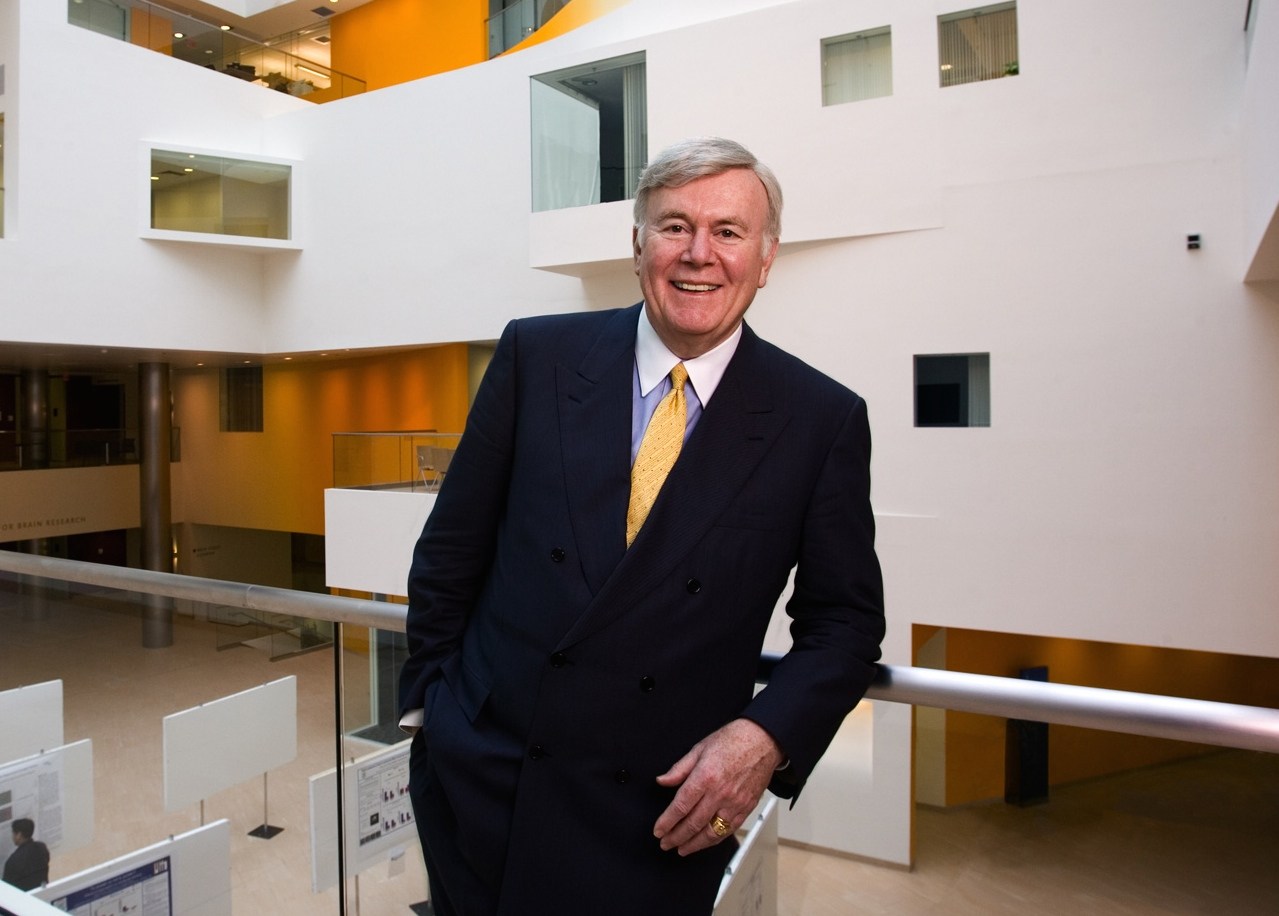Leadership Lessons from an MIT Legend
-
-
Slice of MIT
Filed Under
Recommended

A man of many legacies, the late Patrick Joseph McGovern, Jr. ’59 was known not just for being chairman, founder, and CEO of International Data Group (IDG)—one of the world’s leading information-technology services companies—but for being a founder of the McGovern Institute for Brain Research at MIT, a first-of-its-kind multidisciplinary facility for studying the brain. McGovern founded IDG in the 1960s and the company grew to include 300 technology publications in nearly 100 countries—including the IT and business technology publication Computerworld and the “For Dummies” reference books—460 websites and 700 events focused on all aspects of the IT industry.
In his new book Future Forward, writer Glenn Rifkin tells the story of a man whose influence on the world has been far reaching and offers a top 10 list of the rules McGovern applied in building his tech empire.
Slice got the inside scoop from Rifkin:
What motivated you to write the book?
Glenn Rifkin (GR): I worked at IDG for seven years, and I saw how much of a legend Pat was. Everybody who knew him was kind of in awe of him. In the greater scheme of the information technology world he was somewhat unknown—you had Bill Gates and Steve Jobs, a lot of big names out there, but Pat was kind of obscure because he never felt it should be about him. Every time I would see him, I would end our interaction by saying, “Hey Pat, when do we do your book?” And he would laugh and say, “I’m not really ready for that. There’s just so much more to do.” He didn’t care about the spotlight. It wasn’t that he totally avoided it, but compared to some of the superstars, he just wasn’t looking for that kind of status. But I always knew that there was a story there that had to be told.
What kind of lessons do you think people can learn from him?
GR: The book is focused on the leadership lessons that Pat left behind—it’s a series of 10, with each chapter devoted to that particular lesson, though there could be many more. Some that stand out to me are:
- Identify a mission, go after that mission, and stick with that mission—He knew from the outset that what he wanted to do was inform the world about information technology. He saw this revolution happening in the 60s and knew it was going to be a huge global industry, and he felt that there was an opportunity to tell that story.
- Great ideas can and should come from anywhere and everywhere in the organization—Pat had a let’s-try-it attitude. If you had a good idea, you could present it to him, create a business plan, and more times than not he’d give you the funding and let you try it. Not every leader is comfortable doing that, but Pat was. He called himself “the chief encouragement officer, the CEO”—that’s what he felt his job was, to encourage people.
- Decentralized management—He believed the headquarters of any company should be kept small, especially in a company like IDG, where you are telling people in different markets about the information technology needs of their market. The people telling the story had to be local. He kept an eye on the numbers, but if you did well, he left you alone. It was a very powerful motivator for people. It was the fuel that fired up the growth of the company and resulted in a huge global empire.
What did MIT mean to him?
GR: MIT was a significant catalyst for everything that happened in his life. He told me about how he got a full scholarship to MIT. After building his own computer in high school in the 1950s, some local MIT alums saw it at a science fair and they said, “Boy, this guy’s gotta go to MIT.” No one from his high school had ever gotten into MIT, so for him to not only get accepted but get a full scholarship was a huge thing for him, and he relished the entire experience there.
From all of your research on him, what do you think is his greatest legacy?
GR: He wanted to help the world understand technology and to that end, he spread the learning about technology around the whole planet.
In addition to IDG, he was immensely proud of the McGovern Institute, where he was able to combine his passion for technology with the study of the human brain. In fact, toward the end of his life he spent more time at the McGovern institute than at IDG—he met with researchers, sat in on lectures. He knew technology was going to be the key factor in any success we would have in learning about the human mind, how to further artificial intelligence, and how to cure terrible brain-related diseases such as Alzheimer’s and Parkinson’s. It’s fair to say that Pat McGovern was a giant in his field.







